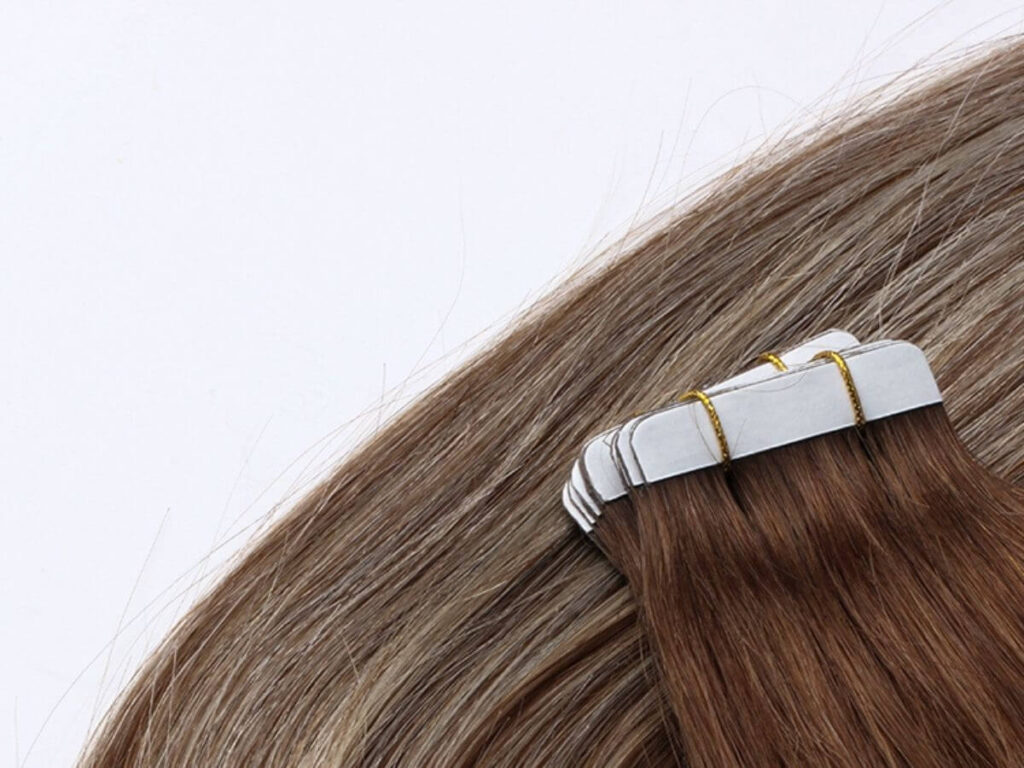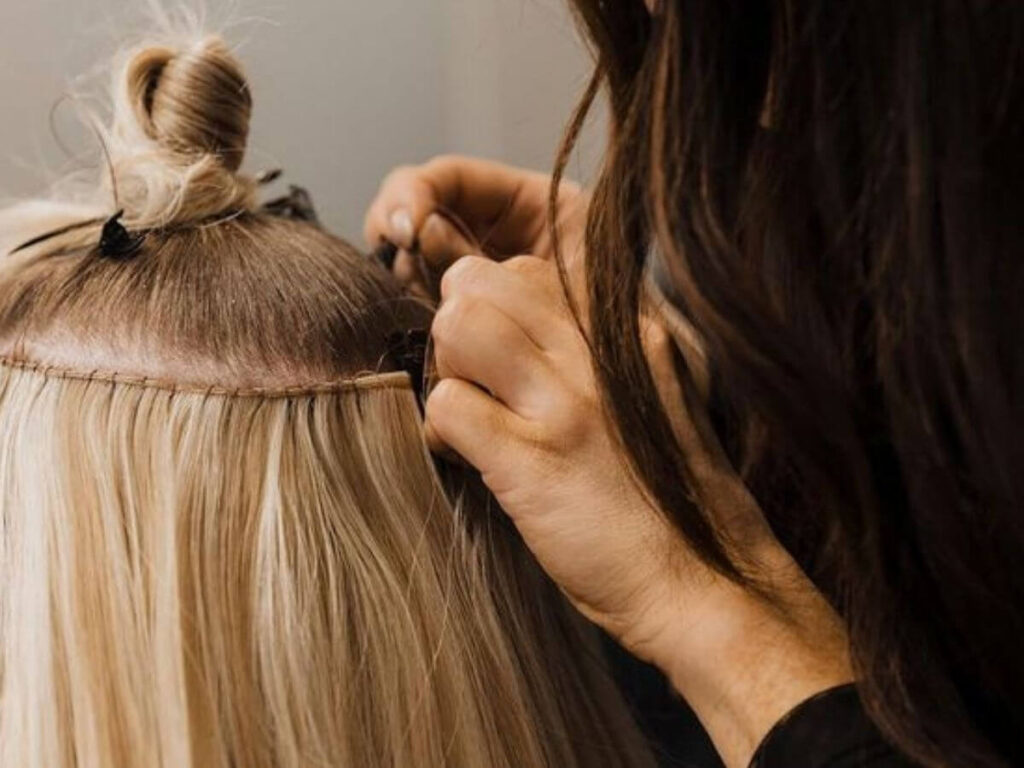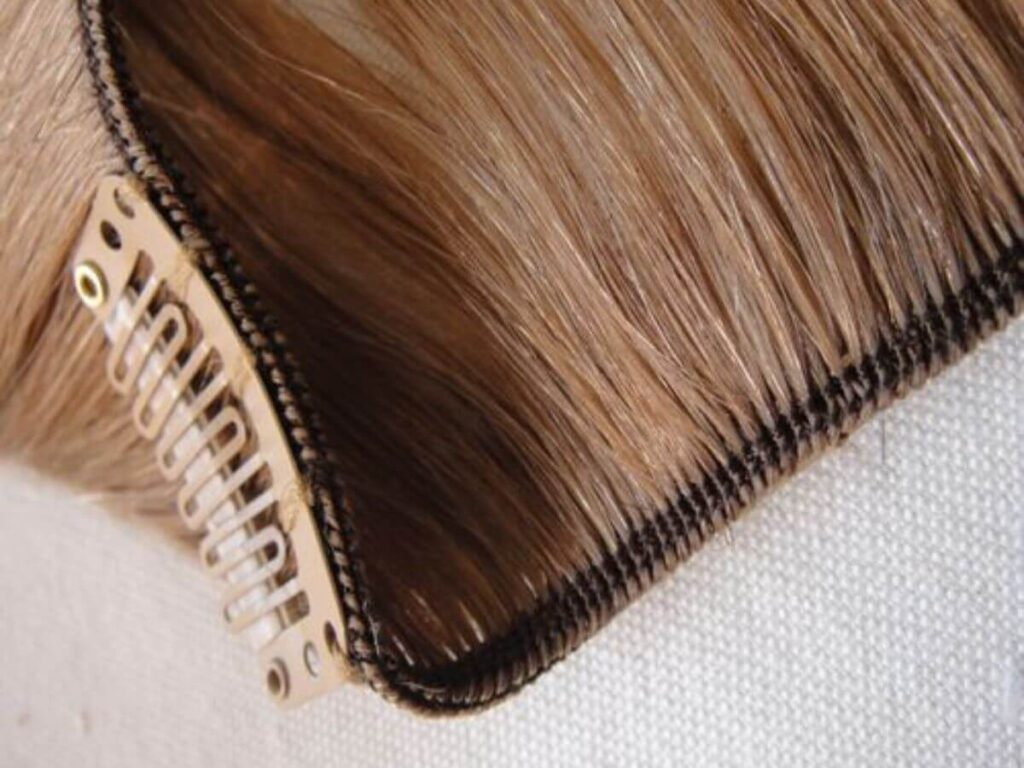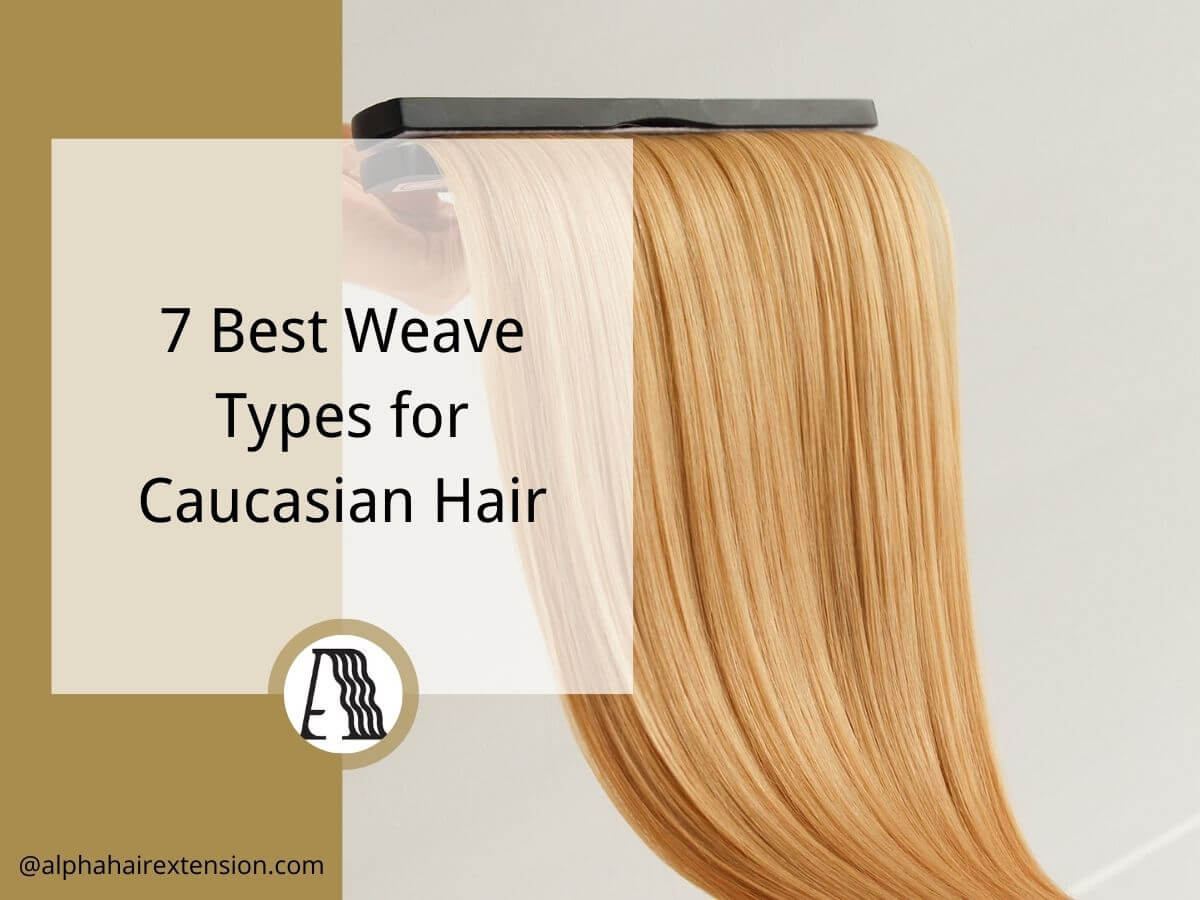A customer once told me about her worst nightmare—diving into a pool, feeling amazing, then spotting her hair extension floating beside her. She never bought from that brand again.
No salon, retailer, or e-commerce business wants that kind of feedback. Customers need extensions that stay put, resist tangling, and survive water.
After many years in the hair industry, testing countless brands, I know which ones deliver and which ones lead to refunds and bad reviews.
This article covers 7 top vendors offering waterproof, long-lasting extensions. If you want products that keep customers happy and coming back, let’s find the right supplier for you.
So let’s begin!
Quick Comparison Chart
Some hair extensions don’t hold up in water. Chlorine, salt, and moisture can cause slipping, dryness, or tangles—leading to complaints and returns.
This table compares 6 extension types that are better suited for swimmers or active users. It highlights key differences in wear method, care, and water performance.
| Extension Type | Longevity | Maintenance Level | Wear Method | Water Resistance | Best For |
| Clip-In | Reusable for months | Low | Clip-in | Removable before swimming to avoid water exposure | Flexible, short-term wear with minimal commitment |
| Tape-In | 6–8 weeks | Medium-High | Adhesive strips | Adhesive holds with proper drying and care | Lightweight wear with a natural look |
| Sew-In | 6–8 weeks | Medium | Braided + sewn-in | Secure in water—no slipping, no adhesives, great hold | Active users needing a reliable, long-lasting, water-resistant solution |
| Micro Link (Bead) | 2–3 months | Medium | Micro bead clamping | Beads stay in place through water activity | Semi-permanent wear with a glue-free method |
| Fusion (Keratin Bond) | 3–6 months | Medium-High | Heat-fused keratin tip | Keratin bonds stay strong when properly maintained | Long-term users seeking a seamless and natural blend |
| Synthetic Swim-Proof | 1–3 months | Low | Synthetic fiber installation | Water-repellent fibers made for swimming | Budget-friendly users wanting no-fuss, water-safe options without heat styling |
1. Clip-in Hair Extensions
Swimming is great for fitness—but it’s not always friendly to hair extensions. Water, chlorine, and salt can cause tangling, dryness, and even make extensions slip. If you sell hair extensions, you need solutions that work for active customers and help protect your brand’s reputation.
One smart choice? Clip-in hair extensions.
Clip-ins are popular for a reason. They’re quick to apply, add instant length and volume, and can be removed just as easily. But are they good for swimming? That depends on how your clients use them.
Some swimmers leave clip-ins in the water, thinking they’ll act like natural hair. But that usually leads to problems. Water can loosen the clips, and chlorine or salt can dry out the strands. That said, clip-ins still make sense for swimmers—if used the right way.
Why Clip-Ins Work for Swimmers
Unlike permanent extensions, clip-ins can be taken out before getting in the water. This prevents exposure to harsh elements and keeps the hair in good shape.
Here’s why they work well for active clients:
- Can be removed before swimming – no tangles, no slipping.
- Staying out of the water – protects shine and softness.
- Lower cost than permanent options – easy to replace if needed.
Clip-ins are made with 100% Remy human hair, giving your customers a natural look they can wear with confidence—and remove when needed. For swim-heavy routines, this flexibility matters.
Tips for Customers Who Swim
Clip-ins work best when users know how to care for them. Share these quick tips with your clients:
Before Swimming:
- Remove extensions to avoid damage.
- Store in a clean, protective case.
- If left in, tie or braid hair to reduce tangling.
After Swimming:
- Rinse natural hair to wash out chlorine or salt.
- Let it dry fully before reapplying clip-ins.
- Use a leave-in conditioner to keep natural hair soft.

2. Tape-In Hair Extensions
I remember a stylist once telling me, “My clients love swimming, but their extensions don’t.” She was right. Some extensions can’t handle water well. They slip, tangle, or dry out.
That’s why tape-in extensions are a popular choice. They are lightweight, flexible, and lie flat against the scalp. The adhesive strips are designed to stay in place—even after contact with water.
But, like any extension, they need proper care.
Why Tape-Ins Work for Swimmers
Many people prefer tape-in extensions because they last longer than clip-ins but aren’t as permanent as other methods. They can handle swimming if installed and maintained correctly.
Here’s why tape-ins are a good choice:
- Lightweight and comfortable: No heavy bonds that pull on natural hair.
- Lay flat and blend naturally: No bulky attachments.
- Semi-permanent: Can last 6–8 weeks with good care.
- Withstand water exposure: The tape is strong, but proper drying is important.
How to Protect Tape-Ins While Swimming
Even though tape-ins are water-friendly, they still need care. Without proper steps, they can loosen or tangle.
Before Swimming:
- Apply a leave-in conditioner: This creates a protective layer.
- Braid or tie hair in a low bun: Helps prevent tangling.
- Wear a swim cap: Reduces direct water exposure (if the customer prefers).
After Swimming:
- Rinse hair immediately: Removes chlorine and salt before they dry out the hair.
- Gently pat dry: Avoid rough towel drying that can loosen the tape.
- Use a sulfate-free shampoo: Keeps the adhesive strong.
- Blow-dry the roots: Wet tape can weaken over time.

3. Sew-In Hair Extensions
I remember the first time I tried swimming with extensions. Everything felt fine—until I got out of the water. My hair felt heavy, tangled, and completely unmanageable. The worst part? The extensions were loosening at the roots, and no amount of brushing helped.
If you’ve been there, you know how frustrating it is. You love swimming, but your extensions don’t. That’s why choosing the right type matters. If you need something secure, long-lasting, and able to handle water, sew-in extensions are one of the most reliable options.
Our sew-in bundles are made with 100% Remy human hair and crafted for durability. They’re a great match for active wearers who need extensions that stay put—even in and out of the water.
Why Sew-Ins Work for Swimmers
- Stay secure in water: No slipping, even after swimming.
- Long-lasting: Can last 6–8 weeks with proper care.
- Great for thick hair: Works best for stronger, healthier strands.
- No adhesives: No glue or tape that can weaken or loosen in water.
How to Make Sew-Ins Work for Active Customers
Even though sew-ins hold up well in water, they still need protection. I’ve learned that taking just a few extra minutes before and after swimming makes a huge difference.
Before You Swim:
- Apply a leave-in conditioner to keep hair hydrated.
- Braid or twist your hair to prevent tangling.
- Wear a swim cap if you want extra protection.
After You Swim:
- Rinse your hair with fresh water to remove chlorine or salt.
- Pat dry instead of rubbing to avoid frizz and breakage.
- Apply lightweight oil to restore moisture.
- Use a wide-tooth comb to detangle gently.

4. Micro Link (Micro Bead) Hair Extensions
Some extensions loosen or break down after repeated exposure to water. If you’ve ever had extensions fall out or get ruined after just a few swims, you know the struggle. Micro link extensions are different. Instead of glue or tape, they use tiny metal beads to attach the extensions to your natural hair. No adhesives mean no slipping, even when wet.
Why Micro Links Work for Swimmers
- No glue or tape—water won’t weaken the bond
- Beads hold extensions in place, reducing slippage
- Reusable—move them up as your hair grows
- Blends seamlessly with natural hair
How to Keep Micro Links Secure in Water
Even though micro links hold up better than some other options, they still need proper care. A few simple steps can make a big difference in how long they last.
Before You Swim:
- Apply a leave-in conditioner to create a barrier against chlorine and salt
- Braid or tie your hair to prevent tangling
- Wear a swim cap if you want extra protection
After You Swim:
- Rinse your hair immediately to remove chlorine or salt
- Pat dry—don’t rub—to avoid pulling on the beads
- Use a loop brush to prevent snagging
- Apply lightweight oils to keep hair soft without loosening the links
5. Fusion (Keratin Bond) Hair Extensions
The first time I heard about fusion extensions, I was skeptical. How could something that’s bonded with heat hold up in water? But after talking to stylists and seeing clients who swam regularly, I realized fusion extensions can be one of the strongest options—when they’re cared for properly.
If you love swimming but don’t want to deal with extensions slipping or tangling, this method might be what you’re looking for.
Why Fusion Extensions Work for Swimmers
Fusion extensions are attached using keratin bonds that are melted and fused to your natural hair. The keratin mimics the protein in real hair, creating a strong and seamless connection. Because the bonds are so secure, they won’t slip in water like some other methods.
But that doesn’t mean you can just jump into the pool without a second thought. Water exposure—especially chlorine and salt—can dry out the extensions if you don’t take care of them.
- Super secure: Won’t loosen or slip while swimming
- Long-lasting: Stays in place for 3–6 months with proper care
- Blends naturally: No bulky clips or beads
- Low maintenance: No daily adjustments needed
How to Protect Fusion Extensions While Swimming
I’ve seen people go into the water without prepping their extensions and regret it later. A few simple steps can make a huge difference.
Before You Swim:
- Apply a leave-in conditioner to protect against chlorine and salt
- Braid or tie hair into a low ponytail to keep it from moving too much
- Try to limit full submersion if possible to protect the bonds
After You Swim:
- Rinse hair immediately to remove chlorine or salt buildup
- Pat dry instead of rubbing to avoid breakage
- Use a wide-tooth comb to detangle gently
- Apply a lightweight serum to keep the extensions soft and hydrated

6. Synthetic Swim-Proof Extensions
I’ve seen it happen too many times—someone gets excited about their new extensions, then after just one swim, they’re left with dry, tangled, unmanageable hair. The frustration is real. You want to enjoy swimming, not stress over your hair every time you get in the water.
If this sounds familiar, synthetic swim-proof extensions might be exactly what you need. Unlike natural hair extensions, which can absorb chlorine and salt, these are made from water-resistant fibers that won’t dry out or lose their shape. They’re designed to handle swimming without the high-maintenance care routine.
Why Synthetic Swim-Proof Extensions Work for Swimmers
Not all synthetic extensions can handle water. Some become stiff, frizzy, or tangled after just one swim. But newer swim-proof synthetic fibers are made to resist chlorine, salt, and constant exposure to moisture.
They won’t dry out or require endless deep conditioning. If you want extensions that stay smooth, tangle-free, and easy to maintain, synthetic swim-proof hair could be a great option.
- Resists water damage: Won’t absorb chlorine or salt
- Low maintenance: No deep conditioning or repair treatments needed
- Holds its style: Won’t frizz, curl, or tangle from water exposure
- More affordable: Costs less than human hair extensions
How to Take Care of Synthetic Swim-Proof Extensions
Even though these extensions are built for swimming, a little care goes a long way. Taking just a few extra steps will help them last longer and look better.
Before You Swim:
- Rinse with clean water to reduce chlorine or salt absorption
- Tie your hair into a braid or ponytail to prevent tangling
- Use a swim cap if you want extra protection
After You Swim:
- Rinse hair immediately to wash away chlorine or salt
- Pat dry gently—don’t rub to avoid friction
- Brush with a wide-tooth comb to remove any knots
- Let air dry—avoid heat styling to keep fibers intact

Conclusion
No more slipping. No more tangling. No more wasted money on the wrong hair extensions.
You now know which vendors offer the best waterproof extensions—clip-ins, sew-ins, and micro links. With the right choice, your customers can swim freely without worry.
So, are you ready to provide them with the best? Start now. Sell extensions that won’t disappoint. Give your customers the confidence to dive in.
Which option are you leaning toward? Let’s get you connected with a trusted vendor.
Contact us today!
Explore More Helpful Resources
There’s more to explore! Check out our additional product selections to find exactly what you’re looking for:
If you’re looking for more insights, we’ve put together a list of helpful articles that you might enjoy:
Still haven’t found what you’re looking for? Don’t hesitate to contact us. We’re available around the clock to assist you.







